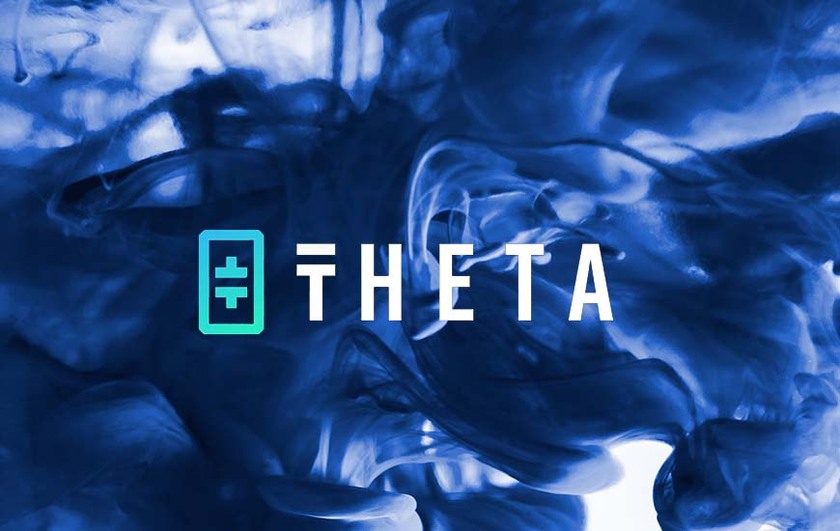The NVIDIA Jetson Orin Nano: Unlocking New Potential for Theta Network’s IoT Edge Revolution ((From Smart Surveillance to Federated AI — Discover How Jetson Orin Nano Redefines Edge Intelligence for the Theta Network))
As the world of edge computing evolves, Theta Network is at the forefront of decentralized innovation, about to shock the world with its tech. Traditionally known for powering content delivery and video streaming, Theta’s role is rapidly expanding to include the Internet of Things (IoT), AI processing and AI-powered edge computing. Contributing, in its own way, to this shift is hardware like the NVIDIA Jetson Orin Nano Super Developer Kit — a compact, AI-enabled edge device designed to handle computationally intensive AI tasks at the network’s edge. While it’s not an ideal choice for a typical Theta Edge Node due to its hardware limitations, its true potential lies in IoT and edge AI applications. Here, we’ll explore the limitations of the Jetson Orin Nano as a traditional Theta Edge Node and highlight its numerous strengths in IoT-related use cases.
The NVIDIA Jetson Orin Nano Falls Short as a Standard Theta Edge Node
A conventional Theta Edge Node is responsible for handling decentralized video streaming, file relay, and computational tasks that require robust CPU, memory, and storage capacity. Here’s how the Jetson Orin Nano’s specs compare to the ideal requirements for Theta Edge Nodes:
CPU: The Jetson Orin Nano’s 6-core Arm Cortex-A78AE CPU has sufficient cores, but its ARM-based architecture is less powerful than the x86/x64 CPUs found in modern desktops and servers.
Memory: With 8GB of LPDDR5 RAM, the Jetson Orin Nano falls short of the recommended 16GB or more for efficient Theta Edge Node operation, especially for video buffering, file transfers, and handling concurrent tasks.
Storage: The Jetson Orin Nano typically relies on eMMC or microSD storage, which is slower and smaller in capacity than the 256GB SSD recommended for Theta’s Edge Nodes.
Network: With gigabit Ethernet support, the Jetson Orin Nano meets Theta’s 5 Mbps minimum upload/download requirement. (GOOD! We can still use it!!)
GPU: The Jetson Orin Nano’s strongest feature is its GPU, which offers 67 TOPS of AI compute power. While traditional Theta Edge Nodes don’t necessarily require GPU acceleration, this capability opens doors for AI-enhanced workloads.
These limitations make the Jetson Orin Nano unsuitable as a primary Theta Edge Node for file relay, large-scale content delivery, or intensive video streaming. However, its AI and IoT strengths present a different story — one where the Jetson Orin Nano could play a game-changing role in IoT-driven Edge AI applications.
Where the Jetson Orin Nano Excels: IoT Applications for Theta Network
While the Jetson Orin Nano may not be ideal for a traditional Theta Edge Node, it excels in IoT applications where low-latency AI, real-time data processing, and edge intelligence are critical. Here’s how this device’s unique features create new possibilities for Theta’s role in IoT ecosystems.
1. Smart Video Transcoding at the Edge
How it works: The Jetson’s GPU can transcode video from surveillance cameras in real time, converting it to efficient formats like H.264 or H.265 before uploading it to Theta’s network.
Use case: Imagine a network of smart cameras at a construction site, each streaming raw video. Instead of uploading raw video, the Jetson Orin Nano processes it on-site, reducing bandwidth usage while maintaining high-quality video.
2. AI-Powered Object Detection and Analytics
How it works: Using computer vision models (like YOLOv8), the Jetson’s AI engine identifies objects and patterns in images and video streams.
Use case: In wildlife monitoring, trail cameras often capture thousands of images, most of which are empty. The Jetson Orin Nano can automatically filter out empty images and only upload images containing animals to Theta’s Edge Nodes. This minimizes storage and bandwidth usage.
3. IoT Gateway for Smart Home Systems
How it works: The Jetson Orin Nano acts as a hub for smart home IoT devices, collecting and processing data from air quality monitors, motion sensors, and thermostats.
Use case: In a smart home, IoT sensors collect vast amounts of raw data. The Jetson can preprocess this data and only send significant events (like temperature spikes) to Theta’s Edge Nodes, cutting down on unnecessary network usage.
4. Predictive Maintenance for Industrial IoT
How it works: IoT sensors on industrial machinery send vibration, sound, and temperature data to the Jetson, which uses AI models to predict equipment failures.
Use case: A factory’s HVAC system might show early signs of failure (like abnormal vibration). The Jetson’s AI system detects this anomaly and uploads a maintenance alert to Theta’s network, preventing costly downtime.
5. Decentralized Federated Learning for AI Models
How it works: Federated learning allows devices to train machine learning models locally and only share updates with Theta’s network (instead of raw data).
Use case: Wearable health devices track users’ vitals (heart rate, oxygen levels, etc.). Instead of uploading sensitive data, these devices train AI models locally on the Jetson and only share model updates with Theta’s network, ensuring privacy and efficiency.
6. Real-Time Video Analytics and Threat Detection
How it works: The Jetson analyzes live video feeds for movement, unusual behavior, or unauthorized entry, sending only relevant event clips to Theta.
Use case: Retail stores use surveillance cameras to track shopper behavior. If the Jetson detects shoplifting, it uploads a video snippet of the event to Theta, while ignoring regular customer movement, saving bandwidth.
7. Smart Content Caching and Delivery
How it works: The Jetson’s AI predicts which content will be most popular in a given area and preloads it to local devices, acting as a local content cache.
Use case: In schools with limited bandwidth, the Jetson preloads educational videos based on local demand. When students access these videos, they are served instantly from the local cache instead of streaming from Theta’s network.
The Role of Theta Network’s IoT Future
Theta Network’s mission is evolving from video streaming to powering decentralized edge intelligence. IoT devices will form the backbone of this shift. By processing data at the edge (like AI inference on the Jetson Orin Nano), Theta can reduce bandwidth usage, lower latency, and support privacy-first IoT networks. Here’s how Theta will evolve:
AI-Powered IoT Systems: Devices like the Jetson Orin Nano enable IoT devices to run AI models locally, reducing the need for cloud processing.
Content Delivery with Edge Intelligence: Smart content caching ensures that frequently accessed content is served locally, speeding up access times.
Privacy-Preserving Data Processing: With federated learning, only encrypted model updates are shared with Theta, not raw user data.
The NVIDIA Jetson Orin Nano may not fit the role of a traditional Theta Edge Node due to limited CPU power and memory. However, it’s a game-changer for IoT applications. From smart surveillance to federated learning, the Jetson can transform how Theta handles edge AI, predictive maintenance, and decentralized IoT systems. As Theta’s role expands into IoT, devices like the Jetson will be at the heart of its evolution, making edge computing smarter, faster, and more secure than ever before.
=====
The content of these articles is for general informational purposes only and should not be considered investment advice. The author is a nominal investor in Theta Network and Theta Token, and their views are largely optimistic, potentially reflecting personal investment interests. Readers should conduct their own research and consult with a professional before making investment decisions.
======
HOW TO BUY THETA TOKEN AND TFUEL (Even if you are in the USA):
1) Download the crypto.com app, and become a member using my referral code: wybt6q76ar which will help me out and support my work.
2) Purchase Tfuel on the app and send to one of your Theta Wallets.
3) Go to Theta Swap and swap 99% of the Tfuel into Theta, keeping 1% behind for future gas fees, that you will need to move tokens later. Note: If your using the mobile wallet, you can do this step right inside the wallet itself.
4) Once you have 1000 Theta toens, you can stake the Theta and be rewarded in more Tfuel.
5) Be patient and you will be greatly rewarded in the future.
Conclusion:
The NVIDIA Jetson Orin Nano exemplifies how cutting-edge hardware can redefine edge intelligence for the Theta Network, extending its capabilities beyond traditional video streaming and file relay. While its specifications fall short of the demands for a standard Theta Edge Node, its true strength lies in enabling AI-powered IoT applications, such as real-time video analytics, federated learning, and predictive maintenance. As Theta Network continues to evolve into a decentralized platform for edge intelligence, the Jetson Orin Nano’s role highlights the transformative potential of integrating advanced edge devices into IoT ecosystems. Together, Theta and the Jetson are set to push the boundaries of innovation, paving the way for smarter, more efficient, and privacy-preserving IoT solutions.

























